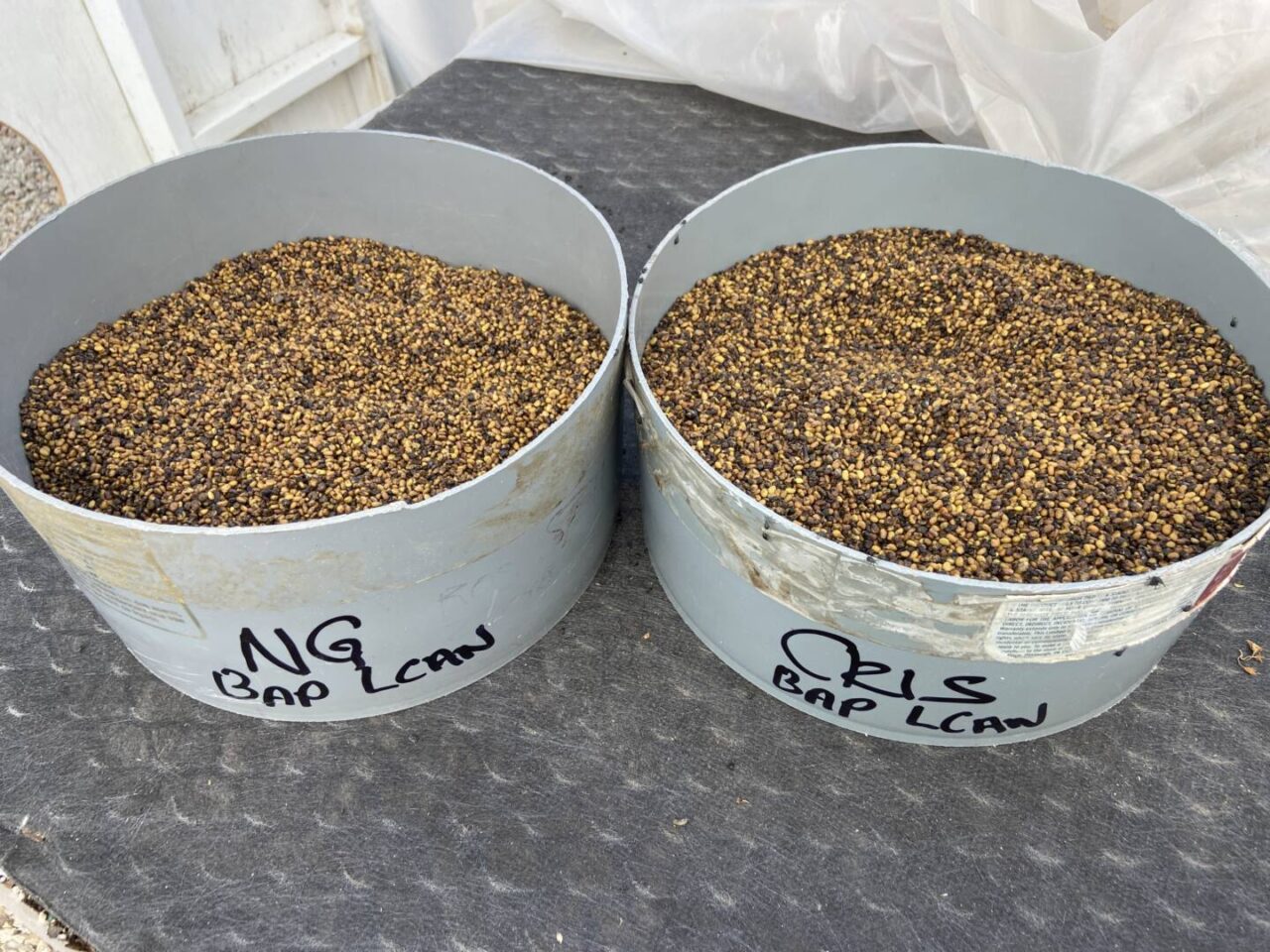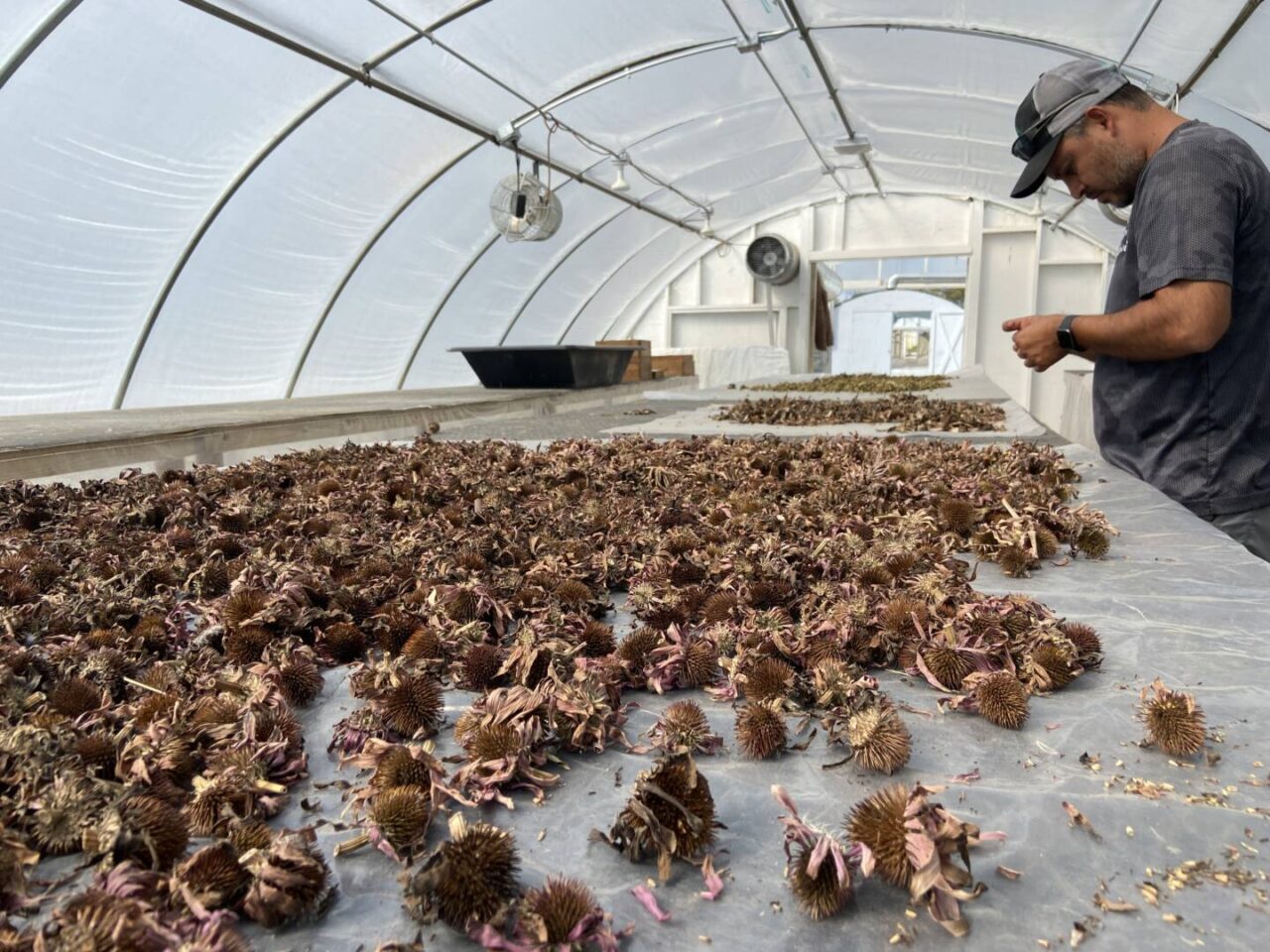Preserving Biodiversity: The Seed Collection Process at Midwest Natural Garden
Enrique Rodriguez is the Production Foreman at Midwest Natural Garden. He has been with the Midwest Companies since 1999. This article was compiled from insights and production practices shared by Enrique.
Midwest Natural Garden’s dedication to preserving the integrity of local plant species begins with the seed. Local ecotype plants are uniquely adapted to their specific geographic environments, making them valuable resources for maintaining biodiversity. Every plant at the garden originates from seed collected within a 90-mile radius of the nursery. This ensures that the plants are well-suited to the local climate and conditions, making them more resilient and valuable contributors to the local ecosystem. At Midwest Natural Garden, collecting, cleaning, and preserving seed is a systematic process built on decades of experience.
Seed Propagation Technician, Manuel Barrera, has been an integral part of the Midwest Natural Garden since 2003. Manuel is responsible for the collection, cleaning, storage, and sowing of seed. The collection of seed does not just happen in a day or a week. It typically begins towards the end of May or early June with the collection of seed from Geum triflorum and select Carex species and goes well into the fall. Meticulously maintained records help Manuel determine the best time to collect seed for a particular plant from year to year.





While the vast majority of seed used to grow Natural Garden Natives® is sourced from the stock beds and display gardens at the nursery, Enrique does occasionally need to purchase seed from trusted sources to meet demand. Seed for Baptisia is often in short supply but this year marked the first time seed was collected from the prairie of Midwest Groundcovers Chairman Christa Orum-Keller. Between the seed collected from the Midwest Natural Garden stock beds and from Christa’s prairie, Enrique estimates he’ll end up with a whopping 10,000 viable plants.
While many nurseries have moved to automated means to collect seed, at Midwest Natural Garden, Manuel’s quick hands and a bucket remain the favored method. Some species like Carex are easy to clean—just a good shake, and the seeds fall off. Echinacea on the other hand, needs to be harvested when it’s essentially still fresh to prevent birds from devouring the seeds. For those plants that are harvested while still fresh, the tops are carefully removed and placed in covered growing shelters to dry, allowing the seeds to fall freely.
Where Manuel has seen change is in a shift towards more thorough cleaning processes. Careful cleaning of the seed provides better insight into the true weight of the seed. This gives us a better understanding of how much seed we’ll have available to sow, and can help sort good seed from bad, leading to increased germination rates. One notable improvement is the use of different-sized screens which are used to filter seeds from debris, such as stems and seed fuzz, which is particularly helpful for species such as Geum triflorum.
Lastly, seed storage is a critical aspect of maintaining the garden’s seed bank. At the Midwest Natural Garden, seed is stored in a cooler that maintains 50% humidity at 50 degrees Fahrenheit. The length of time seed is viable varies. Baptisia seeds, for instance, can last for several years in the seed cooler. In contrast, Sporobolus seeds are kept for only nine months, after which their propagation rate significantly declines.
Midwest Natural Garden’s thorough seed collection process exemplifies a profound commitment to preserving biodiversity and fostering ecological resilience. For those looking to learn more about seed collecting, many forest preserves have seed harvest volunteer positions available. In this role, volunteers assist the restoration staff in collection of native seeds, which are used to reestablish native plant communities in the forest preserves.
Back To Blog
